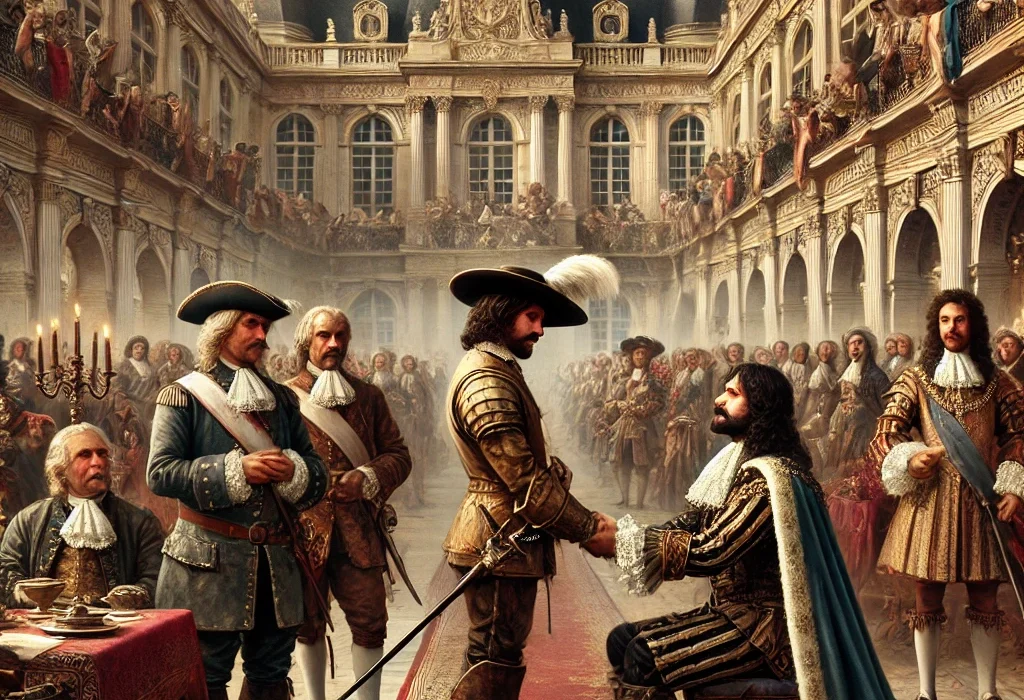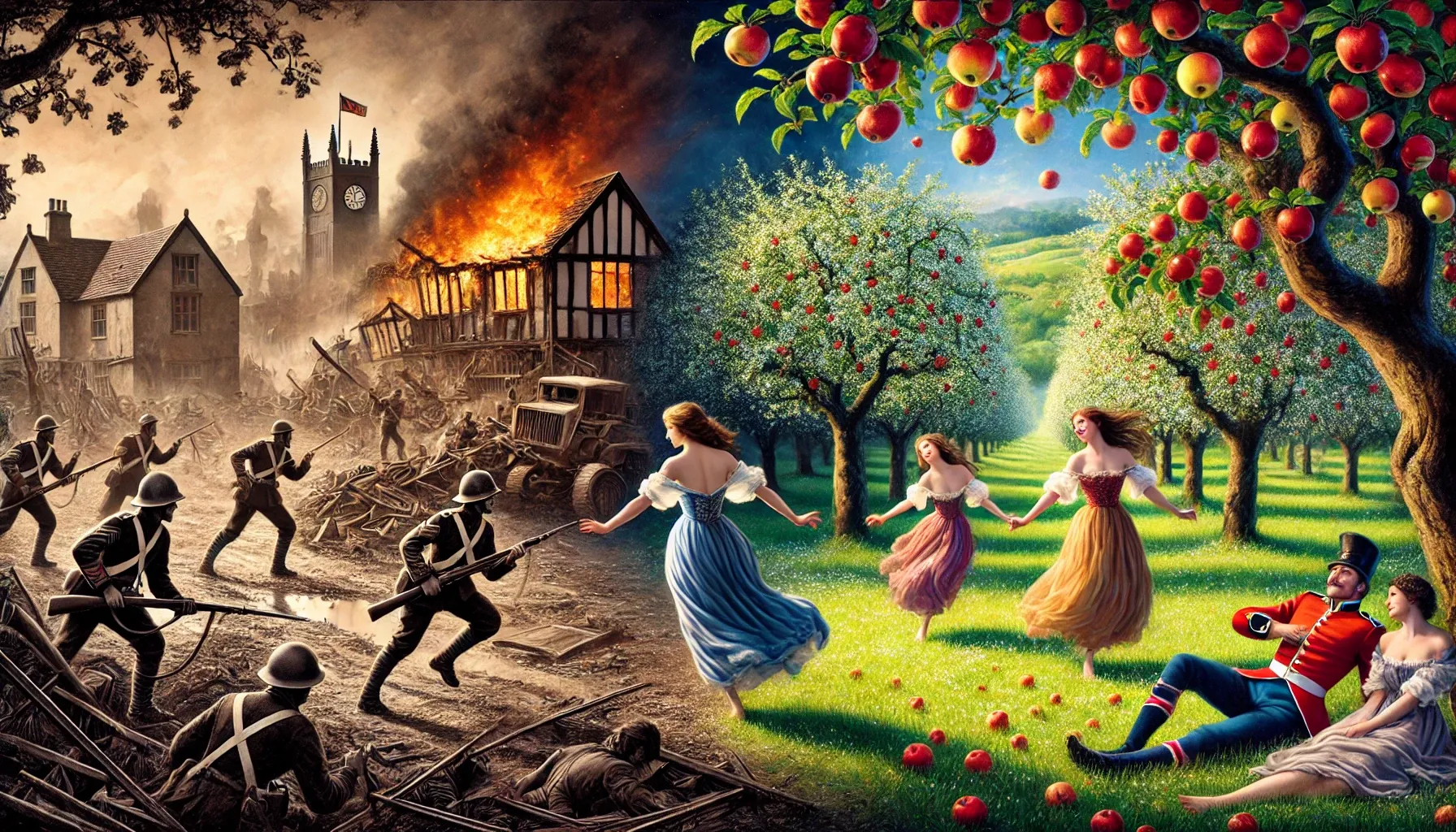Ten Years Later is the third book in Alexandre Dumas’s d’Artagnan Romances series, following The Three Musketeers and Twenty Years After. Published in 1848, this novel continues the adventures of d’Artagnan, the loyal musketeer, along with his comrades Athos, Porthos, and Aramis. Set in the royal courts of France and England, it covers historical events such as the downfall of Nicolas Fouquet, the rise of Colbert, and the mysterious story of the man in the iron mask. The title refers to the period that has passed since the events of Twenty Years After, marking a time of political intrigue, shifting alliances, and personal dilemmas for the aging musketeers.
Plot Summary
The year is 1660, and ten years have passed since the musketeers were last united in the tumultuous days of France’s civil war. D’Artagnan, ever loyal and skilled, has remained in the service of King Louis XIV, though the world around him has changed. The young king, once guided by ministers, is now growing into his role as an absolute ruler, and his ambitions stretch far beyond the court’s boundaries. D’Artagnan, eager for action and restless in his position, awaits his next mission from the king. Meanwhile, his former comrades—Athos, Porthos, and Aramis—have gone their separate ways, living quieter lives, yet fate will soon pull them back into the swirl of political intrigue and personal conflict.
Louis XIV’s court is a place of splendor but also a den of dangerous ambition. Nicolas Fouquet, the superintendent of finances, is a man of great wealth and even greater political aspirations. He has fortified the island of Belle-Isle, drawing the king’s suspicion. Louis, increasingly influenced by the calculating Jean-Baptiste Colbert, sees Fouquet as a threat. Colbert, eager to replace Fouquet and consolidate his own power, fuels the king’s mistrust. It is in this tense atmosphere that D’Artagnan is sent on a secret mission to investigate Belle-Isle and report back to the king.
D’Artagnan’s journey to Belle-Isle confirms the island’s strong fortifications. However, when he returns to report, he is met with unexpected news: the king already possesses detailed plans of Belle-Isle’s defenses, and it soon becomes clear that Aramis, now the Bishop of Vannes, is deeply involved. Aramis, ever ambitious and cunning, has grander plans in motion. He seeks to use his position within the church and the secrets he has uncovered to elevate himself, aiming to place a mysterious prisoner—known only as “the Man in the Iron Mask”—on the throne of France, in place of Louis XIV. This prisoner, as Aramis learns, is none other than the king’s twin brother, hidden away for years to prevent any challenge to Louis’s rule.
Aramis’s plotting is masterful, and he carefully draws Porthos into his schemes, though Porthos, as always, is more concerned with loyalty to his friends than with the complexities of politics. Aramis convinces Porthos that their actions are for the good of France, and the two set in motion a daring plan to replace Louis with his brother. Meanwhile, D’Artagnan grows suspicious of his old comrade’s intentions but remains loyal to the king, determined to uncover the truth behind the political maneuverings.
As the plot thickens, a darker, more personal drama unfolds. Raoul, the Vicomte de Bragelonne and the beloved son of Athos, is deeply in love with Louise de La Vallière, one of the king’s ladies-in-waiting. His love, however, is unrequited. Louise has caught the eye of the king himself, and despite her initial resistance, she is drawn into an affair with Louis. Raoul, heartbroken and betrayed, seeks solace in the counsel of his father, Athos. Athos, though noble and wise, can offer little comfort to his son. The pain of Raoul’s lost love and the disillusionment with court life drive the young vicomte into a spiral of despair. Despite Athos’s pleas for patience and honor, Raoul volunteers for a dangerous military mission in North Africa, seeking death in battle as an escape from his heartbreak.
As Raoul heads toward his fate, D’Artagnan finds himself at the center of the king’s plans to arrest Fouquet. Louis, under Colbert’s influence, decides that Fouquet must be removed before his ambitions grow too large. D’Artagnan, despite his personal feelings of respect for Fouquet, follows the king’s orders and apprehends the superintendent in a spectacular show of loyalty. Fouquet’s fall from grace is swift and brutal, and he is imprisoned, awaiting his final judgment. Throughout these events, D’Artagnan struggles with his duty, torn between his loyalty to the crown and his friendship with those who stand against it.
Meanwhile, Aramis’s plot to replace the king is on the verge of success. He and Porthos have managed to position the Man in the Iron Mask in a place where he could be switched with Louis XIV. However, the king, through D’Artagnan’s sharp intuition and unwavering dedication, learns of the conspiracy. D’Artagnan moves quickly to thwart the plan, but in doing so, he must confront his old friends. The revelation of Aramis’s betrayal is a bitter blow to D’Artagnan, yet his sense of duty to the king prevails.
In the final confrontation, Aramis and Porthos are forced to flee for their lives. Aramis, ever the schemer, manages to escape into exile, but Porthos, whose strength and loyalty have always been his greatest virtues, meets a tragic end. His death is a devastating moment for his friends, especially D’Artagnan, who mourns the loss of the man who had stood by his side through countless adventures.
Athos, too, suffers a great loss as news arrives that Raoul has fallen in battle. The noble musketeer, heartbroken over the death of his son, succumbs to his grief. D’Artagnan, left alone, is made captain of the king’s musketeers, but the honor is bittersweet. The camaraderie he once shared with his friends is shattered, and the price of his loyalty to the crown has left him with a deep sense of sorrow.
In the end, Louis XIV stands unchallenged, his position secure, but the cost of his reign is evident in the broken lives of those who served him. D’Artagnan, ever faithful, remains at the king’s side, but the golden days of adventure, friendship, and honor are long gone, replaced by the harsh realities of power and ambition.
Main Characters
D’Artagnan: Still the brave, loyal, and quick-witted musketeer we’ve known since The Three Musketeers. In Ten Years Later, he continues to serve King Louis XIV, though his loyalty is tested as the king’s behavior grows more authoritarian. D’Artagnan is strategic, and while he stays true to his sense of honor, he often finds himself caught between his duty to the crown and his loyalty to his friends.
Athos (Comte de la Fère): Noble, stoic, and deeply principled, Athos remains the moral center of the group. His relationship with his son, Raoul, becomes a major focus of this novel. His wisdom and sense of duty drive him to counsel his friends, and his journey is marked by personal loss and deep emotional struggle.
Porthos: The loyal, strong, but somewhat simple-minded musketeer, Porthos is less involved in political scheming than his comrades but is always there for his friends. His good-natured personality and strength provide lighthearted moments, though his desire for titles and honors becomes more pronounced in this novel.
Aramis (Bishop of Vannes): The most politically scheming and ambitious of the four, Aramis plays a crucial role in the story. He has risen to a position of power as the Bishop of Vannes and secretly aspires to greater influence. His involvement in the mystery of the man in the iron mask showcases his manipulative and strategic mind.
Raoul, Vicomte de Bragelonne: The son of Athos, Raoul is a young, noble, and tragic character. His love for Louise de La Vallière and his loyalty to his father define his storyline. His unrequited love and disillusionment with courtly life lead him down a path of melancholy and tragedy.
Louis XIV: The young, ambitious king of France, Louis XIV begins to assert more control over his kingdom, growing into the absolute monarch he is remembered as. His actions, including his relationship with Louise de La Vallière, set off a chain of events that affect the personal lives of the musketeers.
Louise de La Vallière: A lady-in-waiting and the object of Raoul’s affections, Louise becomes romantically involved with King Louis XIV, which leads to the unraveling of Raoul’s dreams and a significant emotional conflict in the novel.
Nicolas Fouquet: The superintendent of finances for Louis XIV, Fouquet is a tragic figure in the novel, embodying the themes of ambition and downfall. His lavish spending and perceived threat to the king’s power lead to his arrest, engineered by his rival Colbert.
Jean-Baptiste Colbert: Fouquet’s political rival, Colbert is instrumental in orchestrating Fouquet’s downfall and represents the rise of cold, calculating power in the royal court.
Theme
Loyalty and Betrayal: Loyalty is a central theme in Ten Years Later, especially as it relates to d’Artagnan’s commitment to the king versus his bonds of friendship with Athos, Porthos, and Aramis. The theme of betrayal, particularly political betrayal, is seen in the plots surrounding Fouquet and the rivalry between him and Colbert.
Power and Ambition: Ambition drives many of the characters, particularly Aramis and Colbert, as they seek to manipulate events to increase their influence. The rise of Louis XIV as an absolute monarch also demonstrates the perils and consequences of unrestrained ambition, particularly through his treatment of Fouquet and his manipulation of his courtiers.
Honor and Duty: The musketeers, especially d’Artagnan and Athos, wrestle with their sense of honor. Whether serving the king or protecting their friends, they navigate the complex relationship between personal duty and public service. Athos, in particular, is the embodiment of nobility, often torn between his sense of right and the realities of the world.
Love and Sacrifice: Raoul’s love for Louise de La Vallière forms the emotional heart of the novel. His unrequited love and the pain of watching her fall in love with the king highlight the theme of personal sacrifice. The idea of love as both a noble and destructive force plays out in the fates of several characters.
The Passage of Time: As the title suggests, the passage of time is a key motif. The musketeers are no longer young, and their advancing age brings with it reflections on past glories, lost ideals, and the changing political landscape of France. The theme underscores the inevitability of change, both personal and political.
Writing Style and Tone
Dumas’s writing in Ten Years Later maintains the adventurous, swashbuckling style for which he is famous, but with a more mature and reflective tone than in The Three Musketeers. The musketeers, now older, are portrayed with a sense of nostalgia, and their internal conflicts reflect the weight of their experiences. Dumas contrasts youthful energy with the wisdom that comes with age, exploring themes of loss and change with a more somber and introspective tone.
The prose remains lively and engaging, especially in scenes of intrigue and action, but there is a deeper undercurrent of melancholy, particularly in Raoul’s storyline and the downfall of characters like Fouquet. Dumas skillfully blends historical events with fiction, and his narrative is filled with detailed descriptions of court life, duels, and secret plots, maintaining a sense of grandeur and romance.
The dialogue between characters is sharp, often laced with wit, and reflects the complex relationships they share. The tone shifts between the lighthearted camaraderie of the musketeers and the darker, more serious tone of the political machinations that dominate the story.
We hope this summary has sparked your interest and would appreciate you following Celsius 233 on social media:
There’s a treasure trove of other fascinating book summaries waiting for you. Check out our collection of stories that inspire, thrill, and provoke thought, just like this one by checking out the Book Shelf or the Library
Remember, while our summaries capture the essence, they can never replace the full experience of reading the book. If this summary intrigued you, consider diving into the complete story – buy the book and immerse yourself in the author’s original work.
If you want to request a book summary, click here.
When Saurabh is not working/watching football/reading books/traveling, you can reach him via Twitter/X, LinkedIn, or Threads
Restart reading!








